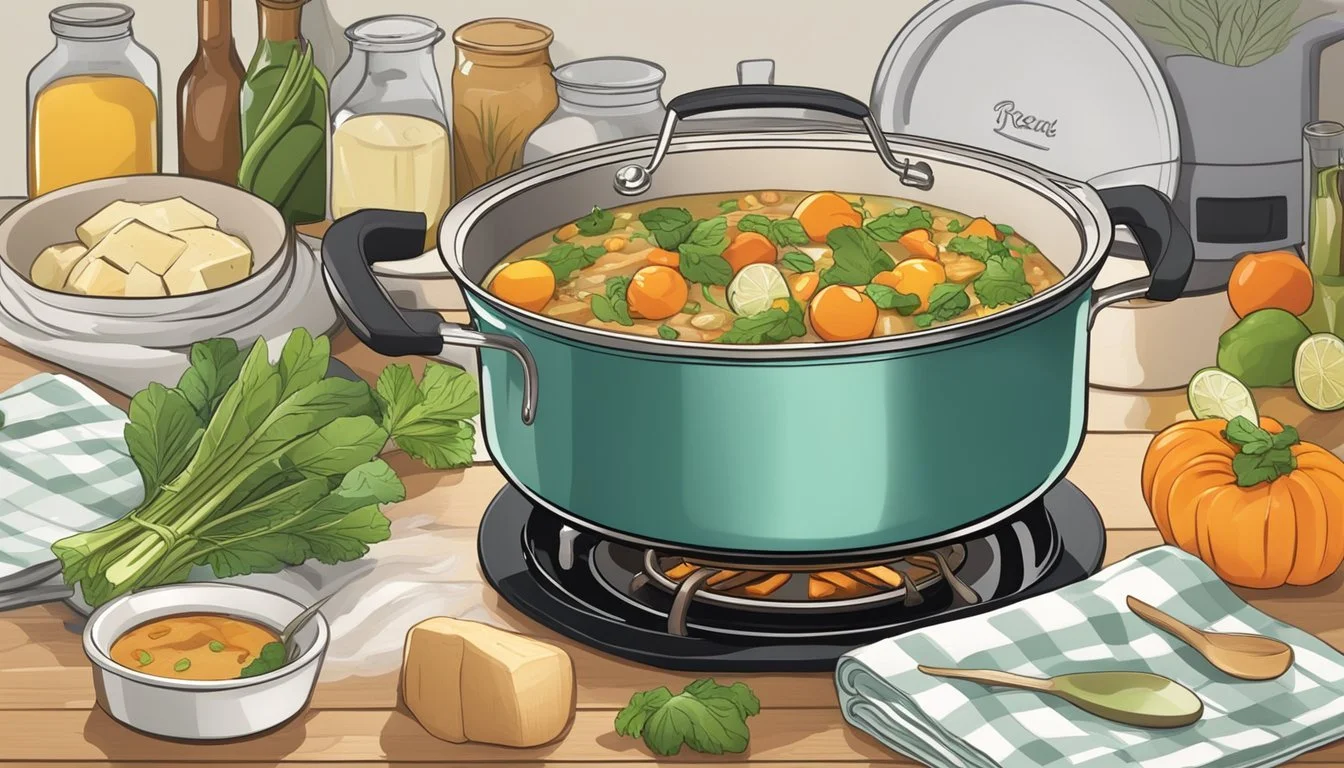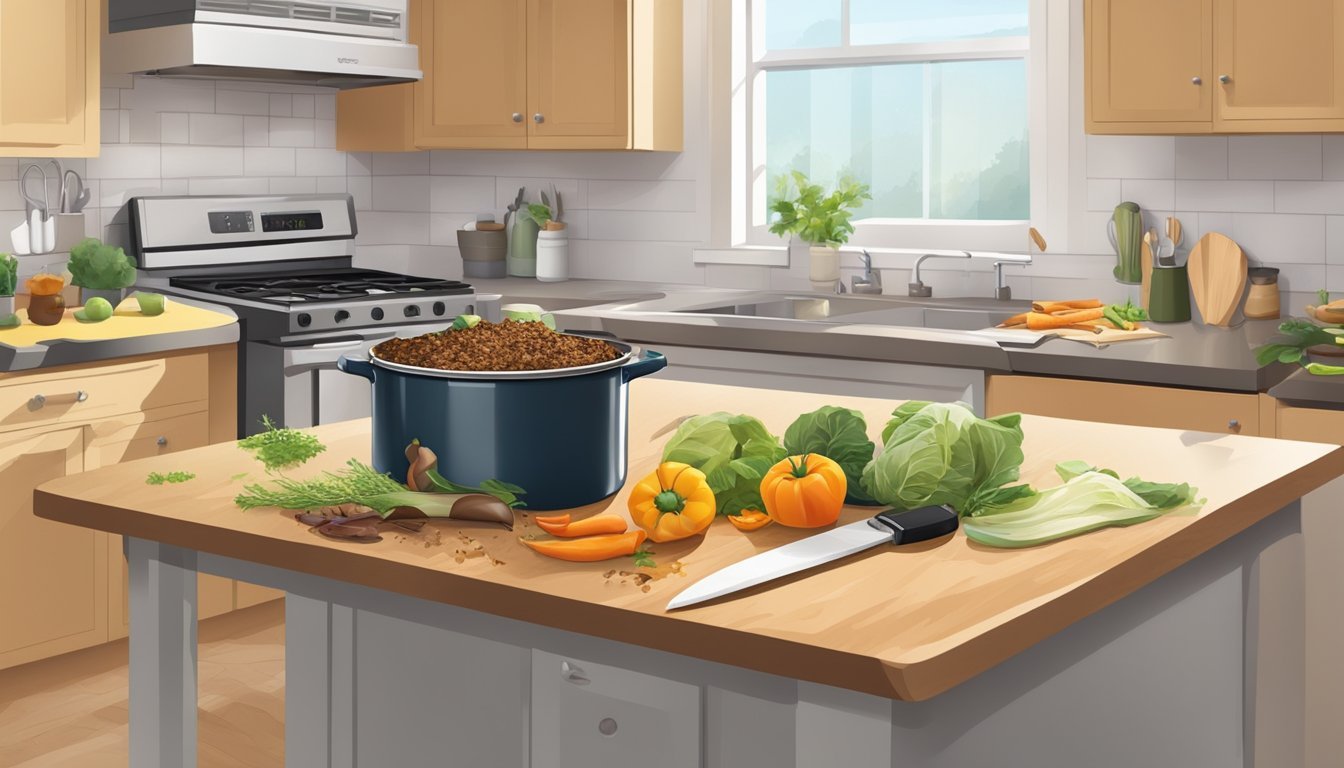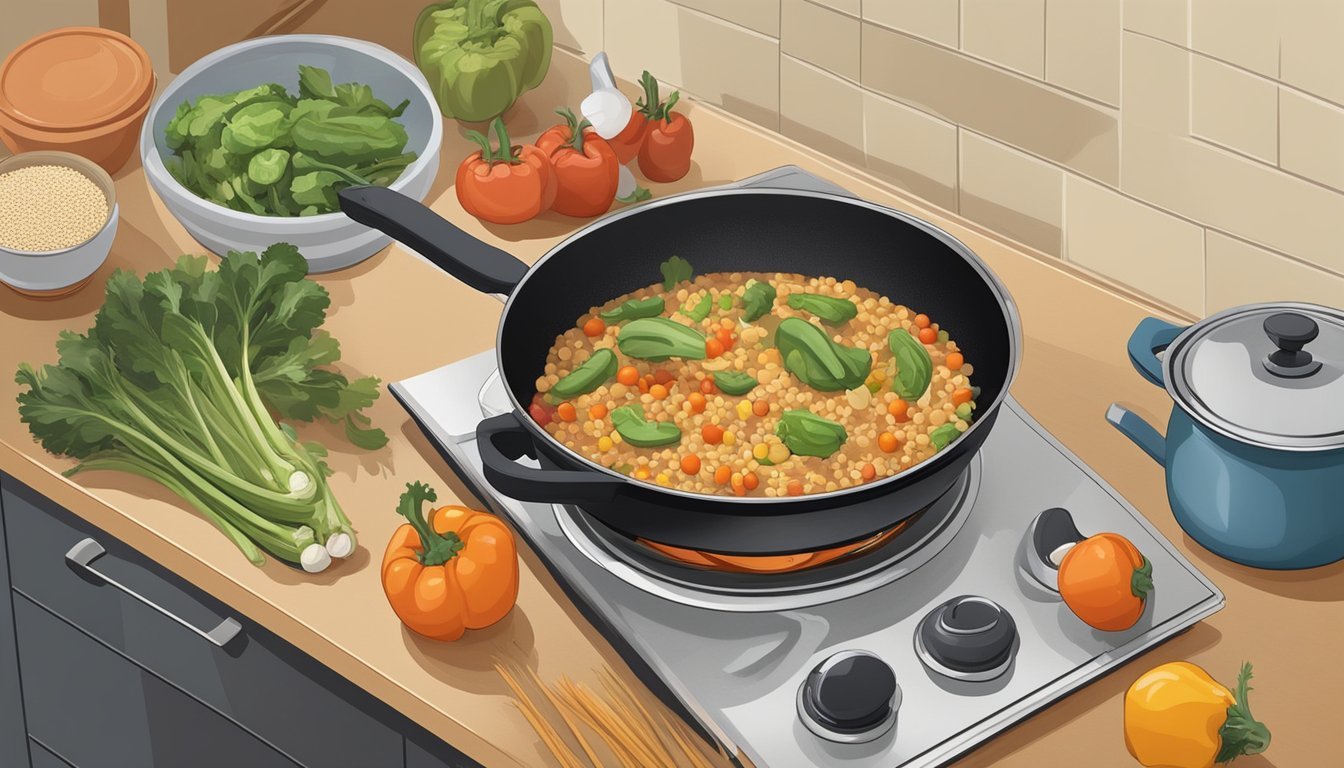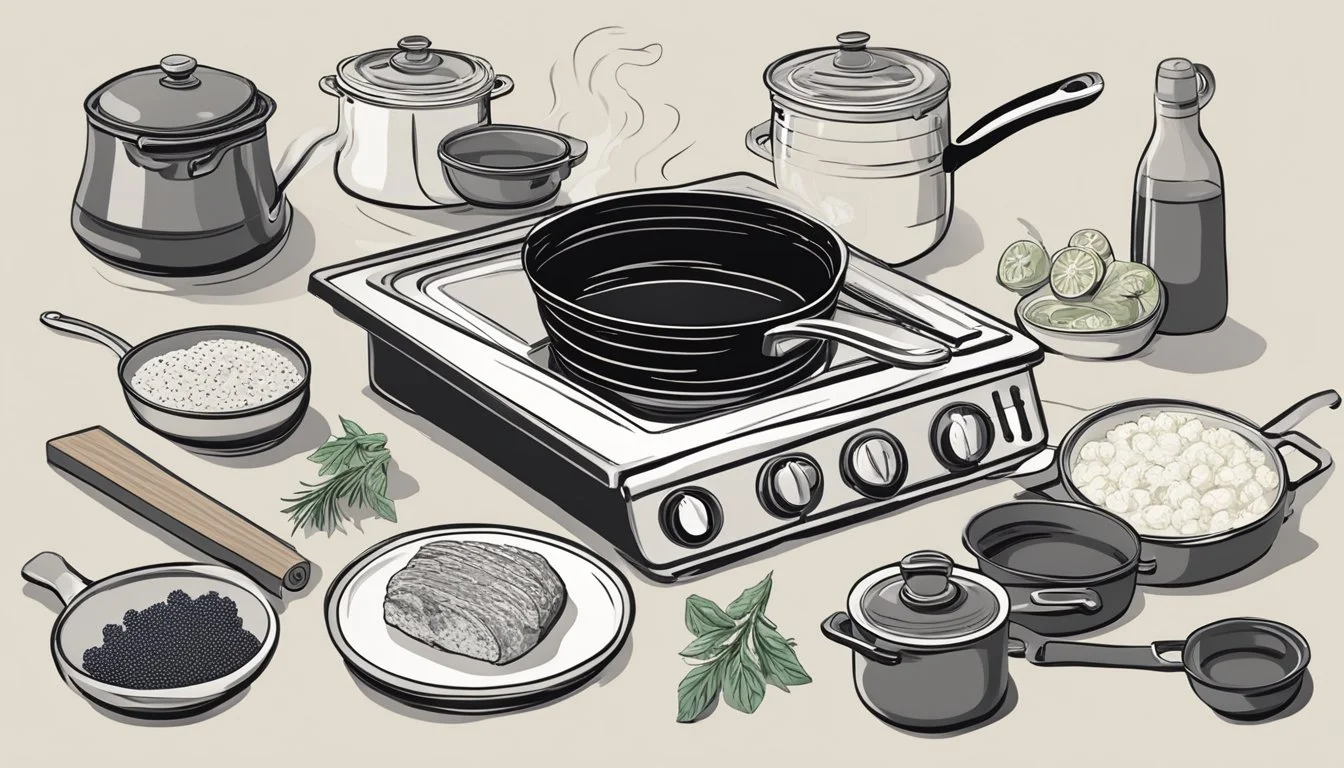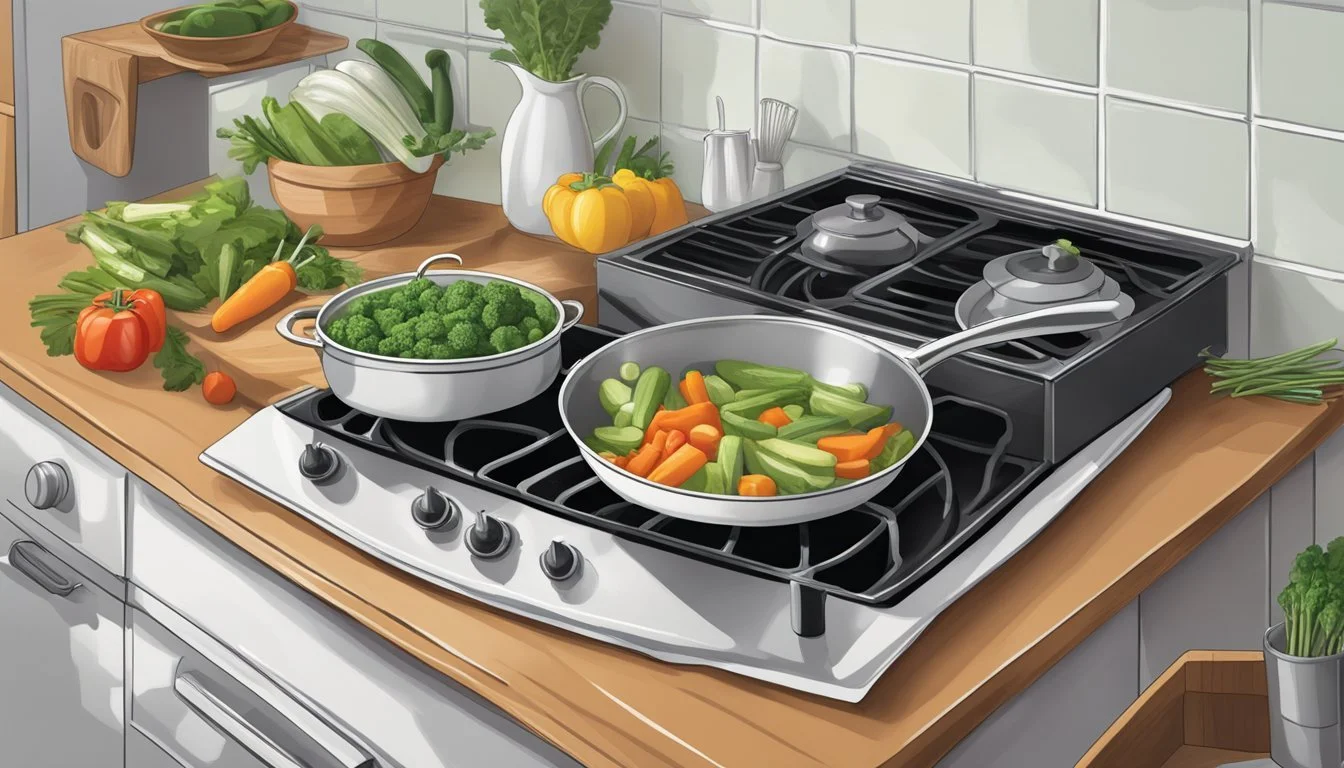How to Cook When You're Making a Meal for One
Mastering Single-Serving Dishes
Cooking for one presents a unique opportunity to cater to personal taste preferences and dietary needs while also managing food portions and minimizing waste. Meal planning is a strategic approach that simplifies the process and ensures variety in the diet, eliminating the monotony that can sometimes accompany solo dining. By focusing on planned meals and streamlined grocery shopping, individuals can create satisfying, balanced, and cost-effective dishes without excess leftovers.
When meal planning for one, flexibility remains key. It allows for adjustments based on changing schedules or cravings, ensuring that the joy of cooking and eating is never lost to strict structure. Individuals can consider cooking larger portions of versatile ingredients to repurpose across various meals, effectively reducing cooking time and effort throughout the week. In addition, strategically stocking the freezer with pre-portioned meals and ingredients like bread, cooked proteins, or vegetables can make healthy meals more accessible on an as-needed basis.
Adopting a few simple strategies can transform cooking for one from a chore into an enjoyable endeavor. Selecting recipes that are designed for single servings can eliminate guesswork and encourage experimentation with new flavors and cooking techniques. Incorporating fresh, quality ingredients and creatively using leftovers can elevate even the simplest meal, making solo cooking a deeply personal and rewarding experience.
Essentials of Cooking for One
When cooking for one, it's important to streamline the kitchen process, from understanding what's in your pantry to knowing the essential kitchen equipment, and developing smart grocery shopping strategies.
Understanding Your Pantry
One's pantry is the cornerstone of efficient solo cooking. Keeping a well-stocked pantry with staple ingredients like grains, pasta, canned goods, and spices ensures they can create meals without frequent shopping trips. It is vital to regularly assess one’s pantry, removing expired items and taking note of what's often used to inform grocery list decisions.
Grains: rice, quinoa (What wine goes well with quinoa?)
Pasta: spaghetti, penne
Canned goods: beans, tomatoes
Spices: salt, pepper, garlic powder
Essentials of Kitchen Equipment
The right kitchen equipment can simplify cooking and cleanup. One should focus on key multipurpose items:
Knives: A quality chef's knife and paring knife can handle most cutting tasks.
Cookware: A non-stick skillet and a small saucepan cater to diverse cooking needs from frying eggs to boiling pasta.
Appliances: A slow cooker or multi-cooker can provide convenience for a variety of meals.
Grocery Shopping Strategies
Grocery shopping strategies include planning meals ahead and buying versatile ingredients that can be used in multiple dishes to minimize waste and expense. Individuals should select a core ingredient like a protein and build their shopping list to create several different meals around it throughout the week.
Protein Choices:
Chicken: breasts, thighs
Beef: ground, small steak cuts
Fish: fillets
Produce: Buy fresh fruits and vegetables in small quantities or opt for frozen to ensure longevity.
By focusing on these essentials, cooking for one can become a streamlined, less daunting task.
Mastering Single-Serving Recipes
Cooking meals for one can streamline the meal preparation process and ensure that portions are perfectly sized for individual enjoyment. Single-serving recipes enable precision and variety without excessive leftovers.
Breakfast Options
When starting the day, single-serve breakfasts can be both nutritious and quick to prepare. For a balanced meal, one might opt for whole-grain toast topped with avocado and a poached egg, guaranteeing a mix of healthy fats, protein, and fiber. Alternatively, overnight oats combined with berries and nuts can be prepared the night before for an efficient and wholesome morning treat.
Toast and Toppings:
Whole-grain toast
Avocado slices
Poached egg
Overnight Oats:
Rolled oats
Mixed berries
Chopped nuts
Milk or a milk substitute
Satisfying Lunch Recipes
Lunch often needs to be quick and satisfying. Recipes that incorporate greens, proteins, and whole grains keep energy levels stable throughout the day. A solo diner might enjoy a quinoa salad with mixed vegetables and grilled chicken, or a simple turkey wrap with lettuce, tomato, and cheese. These recipes are easy to assemble and can be customized to personal taste preferences.
Quinoa Salad:
Cooked quinoa (how long does cooked quinoa last?)
Grilled chicken breast
Cherry tomatoes
Cucumbers
Dressing of choice
Turkey Wrap:
Whole-wheat tortilla
Sliced turkey breast
Lettuce
Tomato slices
Cheese
Delicious Dinner Ideas
Dinner is the time to unwind and relish a fulfilling meal. Single-serving dinners can be both uncomplicated and elegant. For instance, one might prepare a pan-seared salmon (What wine goes well with salmon?) fillet alongside steamed broccoli and a portion of brown rice. Another appealing option is a single portion of pasta tossed with fresh vegetables and a complementary sauce. These ideas not only satisfy the palate but also ensure a nutrient-rich end to the day.
Pan-Seared Salmon:
Salmon fillet
Steamed broccoli
Cooked brown rice
Pasta Primavera (What wine goes well with pasta primavera?):
Cooked pasta of choice
Seasonal vegetables, sautéed
Homemade or store-bought pesto or marinara sauce
Each recipe can be adapted to the available ingredients, and the portions are sized to provide appropriate satisfaction without overindulgence.
Meal Planning and Prep
When an individual embarks on meal planning and prep, they embrace an efficient, flexible approach to cooking. The goal is to create a plan tailored for one, develop savvy prepping techniques, and maintain the adaptability to adjust meals as desired.
Creating a Solo Meal Plan
One should begin by assessing personal taste preferences and dietary restrictions to inform their meal plan. They can create a master grocery list that encompasses all necessary ingredients, which can be reused to save time during repeat meal planning sessions. Here's an example of how a weekly meal plan for one might look:
Monday: Grilled chicken with steamed veggies
Tuesday: Pasta with marinara sauce
Wednesday: Stir-fried rice with leftovers
Thursday: Baked salmon with quinoa
Friday: Chicken salad using leftover grilled chicken
Weekend: Flexible meal choices or dining out
Efficient Meal Prepping Techniques
Individuals should focus on techniques that save time while maximizing the use of ingredients. For instance, batch-cooking proteins or grains at the start of the week can streamline the cooking process. Cooking one type of protein, like a chicken breast, and repurposing it into different dishes such as tacos or salads can be particularly effective. Preparing and storing key ingredients in clear, labeled containers keeps the fridge organized and helps one visually track what's on hand for the week.
Cooking with Flexibility in Mind
Maintaining flexibility in a meal plan means being open to altering the menu based on mood, cravings, or unforeseen schedule changes. If a person is not in the mood for the scheduled meal, they might opt for something simpler like an omelet or a quick salad, ensuring they use perishable items before they go bad. Freezing portions of large-batch dishes offers the flexibility to revisit them in future weeks, preventing waste and providing easy meals for busy days.
Managing Leftovers and Food Waste
When cooking for one, effective management of leftovers and food waste is crucial. One can save money and reduce their environmental impact by repurposing leftovers and minimizing the amount of waste produced.
Repurposing Leftovers
Individuals can transform leftovers into new and exciting meals to prevent waste and keep their diet varied. Here are some practical ways to achieve this:
Reinvent Proteins: Leftover meats from dishes like roasts can be cut into pieces and added to salads, sandwiches, or wraps.
Deconstruct Meals: Components of previous meals can serve as the building blocks for new ones. For instance, leftover veggies can be tossed into omelets or blended into soups.
Flavor Boosters: Use aromatic scraps like carrot tops to make condiments, such as homemade chimichurri, which can add a fresh taste to other dishes.
Minimizing Food Waste
Reducing food waste is just as important as repurposing leftovers. Here are tactical steps one can take:
Proper Storage: Store leftovers in airtight containers and keep them in the fridge or freezer. Label these containers with dates so one knows when to use them by.
Portion Control: Freeze leftovers in one or two serving portions to avoid thawing more than needed.
Use-by Dates: Keep track of perishables and plan meals around using the ingredients with the soonest use-by dates first.
By implementing these strategies, individuals cooking for one can enjoy a varied diet, save money, and contribute positively to the environment.
Smart Storage Solutions
Effective storage solutions are crucial for maintaining the freshness and ensuring the ease of reheating meals when cooking for one.
Freezing and Reheating Tips
One should focus on preparing dishes that freeze well—like lasagna, which can simply be transferred from freezer to oven when it's time to eat. Freezing should be done in appropriate portion sizes, using containers that are both freezer and oven-safe to facilitate easy reheating. Dishes can typically be reheated in the oven at the temperature they were originally cooked at, with a general rule of adding 10% more time if the dish is frozen.
Lasagna: Oven at 375°F for 35-40 minutes, plus 3-4 minutes to broil.
Optimizing Refrigerator Space
The refrigerator should be organized to allow for sufficient airflow, which keeps food fresh. An individual can achieve this by spreading dishes evenly and not overcrowding shelves. Certain containers, such as those from NutriBox, provide clear, stackable storage options which make good use of space and keep contents visible.
Container Dimensions: 7 x 5 x 2 inches.
Capacity: 24 ounces.
Containers should be top-rack dishwasher safe for easy cleaning and it is important they are also airtight to avoid odors. One should place frequently used items at the front for convenience and rotate older items forward to reduce waste.
Creating Variety and Enjoyment
When cooking for one, the key is to maintain excitement in the kitchen while ensuring a nutritious diet. The focus should be on exploring new flavors and achieving a balance between wholesome and appetizing meals.
Experimenting with Flavors
One can create variety in their meals by experimenting with different herbs, spices, and seasonings. Adding fresh basil to a pasta dish or incorporating a new spice mix into a homemade curry can transform familiar dishes into something new. It’s also beneficial to try cooking with a variety of grains—they not only contribute diverse flavors but also textures to meals. Quinoa, bulgur, and farro, for instance, can be excellent bases for salads or side dishes.
Herbs: Parsley, cilantro, dill
Spices: Cumin, coriander, paprika
Grains: Rice, barley, couscous
Balancing Nutrition and Taste
Striking a balance between nutritious ingredients and flavor is crucial for an enjoyable solo dining experience. One can opt for a simple yet satisfying meal of grilled chicken with a quinoa salad, offering a good mix of protein, healthy fats, and grains. Breakfast might include a bowl of overnight oats with berries and a sprinkle of nuts, combining convenience with a balanced nutritional profile.
Balanced Breakfast: Whole-grain toast with avocado and eggs
Easy Meals: Stir-fry with pre-chopped veggies and pre-cooked grains
Homemade Options: One-pan roasted vegetables with a portion of baked salmon
Economical Cooking Strategies
When preparing meals for one, individuals can significantly cut costs and reduce waste by focusing on budget-friendly recipes and smart alternatives to expensive takeout.
Budget-Friendly Meals
One can create economical and filling meals by choosing ingredients that offer the best value for money. Beans, rice, and pasta serve as cost-effective bases, while frozen vegetables retain most of the nutrients and can be more affordable than fresh produce. Cooking in small batches prevents waste and makes it easier to use leftovers creatively. For example, chili made with canned beans can be served on its own one day, and as a filling for baked potatoes the next.
Alternatives to Takeout
To resist the convenience of takeout, it's essential to have a selection of quick and easy recipes that can rival the appeal of restaurant food without the cost. Stocking the freezer with pre-portioned meals like marinated chicken breasts or individually-wrapped fish fillets ensures one has the components for a healthy and delicious meal ready to go. Using a slow cooker or pressure cooker can effortlessly transform inexpensive cuts of meat into tender, flavorful dishes that rival the quality of takeout, with minimal hands-on time required.
Specialty Cooking Techniques
In meal preparation for one, mastering a few specialty cooking techniques can make single servings exciting and diverse. Having the right skills in skillet usage, roasting vegetables, and preparing savory sauces and stews enhances both flavor and variety in solo dining.
Skillet Mastery
Using a skillet is key to efficient and versatile cooking for one. It's perfect for sautéing, searing, and even baking small portions. For instance, they can cook tender chicken breasts to a golden finish or create a fluffy, single-serve frittata. With a well-seasoned cast iron skillet, the single diner benefits from its natural non-stick qualities and even heating.
Sautéing Vegetables: For a quick side dish, sautéing vegetables in a skillet with olive oil and a pinch of salt yields a flavorful result.
Searing Proteins: They can achieve a rich caramelization on meats by searing them over high heat, then finishing the dish with a brief oven bake if necessary.
Roasting Vegetables
Roasting vegetables in the oven brings out their natural sweetness and gives them a satisfying texture. Individuals can roast a single serving of vegetables quickly and easily.
Preparation: Vegetables should be chopped into uniform pieces, tossed with a bit of oil, and seasoned before roasting.
Roasting Time: Smaller pieces take less time and roast at around 425°F (220°C) for about 20-25 minutes, while larger cuts may need longer.
Savory Sauces and Stews
One can create a base of sauces and stews to pair with a variety of meals throughout the week. These techniques add moisture and richness, transforming simple meals into comforting dishes.
Sauces: Learning how to build a sauce from a roux or how to reduce a simple tomato sauce can add great flavor depth to dishes.
Stews and Soups: Stews, chili, and soups can be cooked in smaller batches to avoid leftovers. They usually involve simmering ingredients over low heat to meld flavors.
By focusing on these specific cooking techniques, individuals cooking for one can produce delectable meals that are both satisfying and practical. The use of the skillet, the art of roasting vegetables, and the creation of savory sauces and stew contribute significantly to the joy and ease of preparing single servings.
Advanced Meal Planning Tips
When cooking for one, an individual should consider advanced strategies like selecting seasonal produce to enhance flavor and nutrition, and effectively meal-prepping to save time and reduce waste.
Leveraging Seasonal Ingredients
By focusing on seasonal ingredients, a person can take advantage of peak freshness, which often translates to better taste and nutritional content. They can:
Compile a seasonal produce list by checking resources such as local farmers' markets or agricultural websites.
Adjust the meal plan according to what items are in season, optimizing for cost and flavor. For example, incorporating fresh berries in summer salads or using root vegetables in winter stews.
The Art of Meal-Prepping
Effective meal-prepping involves planning and preparing components or entire meals ahead of time. Practitioners should:
Dedicate time for prep: Choose a day to prepare meals or meal components. Sunday is a popular choice for many.
Optimize pantry staples: Stock up on versatile items like rice and other grains that can be cooked in large batches and used in various meals throughout the week.
Invest in quality storage: Airtight containers can keep prepped food fresh and make portioning easier.
Grocery Shopping Efficiently: Make a list based on the meal prep schedule to avoid unnecessary purchases.
Day Ingredient Prep Method Usage Sunday Brown Rice Boil Stir-fry, Salad, Burrito Bowl Monday Quinoa Steam Side dish, Quinoa Salad Wednesday Sweet Potatoes Roast Stuffed Potatoes, Hash, Salad Toppings
Incorporating these tips into one's routine can make meal planning for one a streamlined and enjoyable process, ensuring meals are both practical and pleasurable.
Conclusion
Cooking for one need not be a mundane task. It presents an opportunity for creativity and self-expression through food. Individuals should embrace the freedom to tailor meals to their own dietary preferences and moods. One can alternate between different types of dishes, such as all chicken recipes one week and beef the next, to maintain variety and avoid food waste.
Freezing plays a key role in managing portions and preserving food quality. Freezing slices of bread or whole meals ensures that one always has access to quick, healthy options. Slow cookers can also be utilized effectively, preparing single portions of soups, stews, or curries that are both comforting and convenient.
In summary, when cooking for one, it's recommended to:
Adapt meals to personal tastes and whims.
Plan and shop judiciously to avoid excess.
Freeze portions for future use and convenience.
Invest in versatile kitchen tools like slow cookers.
Utilize leftovers creatively in new meals.
Ultimately, cooking for oneself can be a fulfilling way to explore new recipes and ingredients while keeping health and efficiency in mind.

